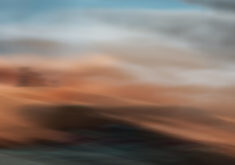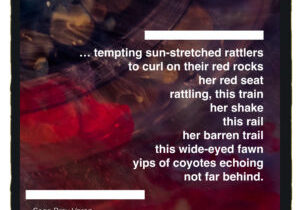Finding Your Elusive Theme
What is the magic that makes an artistic piece look so masterful? A mastery of the craft is certainly an important aspect but, more important than that, it is the cohesiveness of the work, that intentional, purposeful, controlled result. Or at least the viewer’s perception that we meant to do it that way (because, yep, sometimes, some of the best stuff actually came about by accident!)
If you followed me over here from the Weekly Polymer Arts blog, then you’ve probably heard me go on about the importance of intention to create cohesive work. Knowing what your purpose is in creating a particular project will, ideally, direct the choices you make in the process of creating. However, the viewer, listener, or reader is not likely to see the logic of your intentional choices as much as the cohesiveness. Another word for the cohesiveness they see is theme.
Whether it’s capturing the awe-inspiring vistas seen on a recent mountain vacation, the emotional torture of heartbreaking loss, or spotlighting societal prejudices, your themes create a thread that holds all the parts of your individual work together. Some creatives start with a theme in mind and then attempt to create work that conveys their views about that theme. Others jump in with only an initial prompt to guide them, like a photo from that mountain vacation, a specific memory of a loved one who died, or a news story about a hate crime. Either way, there is a theme to play around in, a place for our intention to wander. Think of theme as the place you go, and intention as the road you choose to follow as you explore that place.
Now, what if you can’t identify your theme? It would be kind of like waking up at the wheel, not knowing where you’re at, and driving around aimlessly trying to figure that out. Not identifying the theme can make the creative process rather frustrating. I have a theory that this is key to many people’s artistic blocks. We know we want to go some place (we want to create and express ourselves) but we’re not sure where to go because we don’t know where to start (that blank page/canvas problem!) or we don’t know where we’ve really landed ourselves after we get started. Luckily, we have some built in ways to find theme.
The Common Thread
Have you ever seen that competitive chef show where the contestants are challenged with making a dish incorporating a list of incongruous ingredients? Some of the combinations are just crazy. Watermelon, canned sardines, pepper jack cheese, and zucchini? What do you do with that? Well, the chefs all do the same basic thing — they find a common thread, something all the ingredients can be a part of, and then use basic ingredients in the provided pantry to tie them together. In other words, they find a theme all the required ingredients can work with, then bring in the other ingredients that make them work together.
You can use that same approach to find your theme and, ultimately, your intention. All you need is a list of the elements you have to work with or want to work with. The elements can be general or specific. Just having a list of any sort gives you a place to start.
Let’s say you saw a story about a hate crime and you really want to create something as a personal response to it. What are the elements that stood out from that story and/or what kind of emotions did it bring up for you? Jot down the things that stood out, things that you would love to incorporate in your creative work.
Now, look at your initial list and ask yourself, “What ties these together?” Yes, the news story you heard does tie them together, but you are looking for your own version, your own mode of expression for the thoughts and emotions the story brought up in you. What you are looking for is what the elements you pulled out collectively say. Maybe all the elements are about the victim or maybe they’re more about the perpetrator whose motivation you can’t fathom. Perhaps they are primarily about the society that allowed this crime. Or do the elements you identified echo your own experiences with prejudice?
This self-questioning can work even when you don’t have some specific exterior prompt. You can look at the elements you want to work with and do that same kind of digging down.
For instance, if you’re doing visual art, maybe there’s a new technique, color palette, and/or form you want to play with. Why do you want to work with those specific elements? Mind you, “I think they’d look cool,” is not the most helpful answer. Search yourself for things like “I’m drawn by the texture of this new technique” or “I’ve been gravitating towards those kinds of colors”, then ask yourself why. What is enticing about those textures or what emotions or memories do those colors bring up?
Write down the more specific elements you come up with and then you ask yourself, “What common thread can I draw between all of them?” If you can find common ground among them, you’ll find your theme.
If you’re writing books, poems, so even music you can start with the genre or style you are aiming to work in. Just ask yourself why you are drawn to that? What people, places, or things have intrigued you lately that you can see integrating into work of that genre or style? Start jotting down intriguing elements and look for a pattern between them. The pattern doesn’t have to encompass all of them, just enough of them to develop a theme you can get behind.
The Theme Making Mind
Let me tell you a secret. When I sit down to write a poem, I never know what I want to write about. I know, that is so not how most people think a poet would create, but most of my poetry writing is done when I first wake up, when I’m groggy and not all that lucid. So, I just put down the first line or two that comes to mind.
These initial lines rarely make any sense to me and most of the time I think, “Well, this is going to suck.” But then I keep on writing, and I start to see how the words connect. It’s like finding a page ripped out of a book and trying to decide what the story could be about based on the few words I have in hand. I figure out how they can relate and fill in the blanks. It’s not that odd a thing to do. You just have to trust that your mind will make the connections or know that if it doesn’t, it’s not the end of the world and you’ll have the chance to try again.
This is why I don’t find it surprising that, with just a couple of unintentional lines, I can always (yes always) complete a poem with a very specific theme in those morning writing sessions. I’m not saying they’re all good poems and most of them, even if promising, need extensive work, but what I accomplish in those sessions is finding my theme. When I work on the poems later, it’s my intention inspired by my theme, the aspect of that theme I want the poem to express, that guides those edits.
What my brain does with those poems is not special. All our brains naturally want to fill in the blanks, make up stories, and find the logic in the disparate and disassociated things we see all the time. Why did the boss’s secretary suddenly get fired? Why is that helicopter hovering over the park? Does that Chihuahua really belong to that 7 foot tall bodybuilder?
We ask ourselves these kinds of questions throughout the day and, even if we can eventually find out the actual answer, we often start making up possibilities. We do that by searching for the common thread among the details that we do have and accessing our knowledge of similar situations or stories that we’ve heard. Between the details and our personal knowledge base, our imagination develops a probable story (the secretary must’ve been stealing, there is a wanted fugitive in the park, the bodybuilder is doing a favor for some female in his life…) and, especially us creative types, we may even embellish those little stories.
So, you see, pattern finding, story weaving, and creative embellishment are common skills you probably already have. They can help you discover and develop the themes in your work. Then you just need to be willing to dig down and define your intention — that thing you want to say or show with your project — to really put that theme to work.
Now, about next week…
There is one other aspect about finding theme I haven’t hit on here. That’s the painful subject of removing things that don’t work with the theme. But, as that can be a very emotional discussion for our fragile artistic spirits, and because I have gone on long enough here today, I’m going to save that for next time.
Oh… And then there’s the thing about the theme changing mid project. How do you handle that? Hmm, there might be more than just one other article on theme in our future here.
But don’t worry about those aspects right now. Just think about how you can discover or better develop your themes and see what a little focus on theme can do for your work.
To be truthful, I’m not sure when the next article will get done and posted. I’ll aim to at least have another prompt for you and share one of the poems that I wrote based on the August prompt this next weekend. (Did you work with the prompt progress? You still have a day or two! You can find it here.)
The thing is, I am traveling to take care of some family business over the next couple weeks, so I’m not sure what I can get done. You may have noticed I didn’t get anything out last week. I had a quick trip out to Colorado and couldn’t wrestle my article into shape before I did. So, forgive me for the inconsistency right now while I take care of some family stuff.
Thanks for your understanding. Keep up your creative habit!









